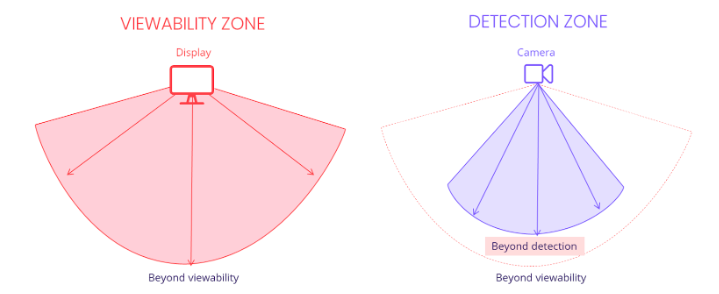
If you really want to make an impression, make sure your message can be seen. If no one sees it, no one wants to pay for it. We bring in a frugal approach to grab eye balls. We deliver real-time audience analytics so you know exactly the performances of your campaigns. Walkert AI’s computer-vision technology measures viewability, views and attention time, which elevate DOOH to the most accountable digital medium available today. Our data & analytics provide a unique understanding of a campaign’s performance as well as granular actionable insights to optimize a planning strategy, inspired by Quividi.
We follow an audience measurement process, lets take a look at it.
Viewing zone vs Detection zone

The adjustment factor

To compensate for differences between the detection zone and viewability zone, Walkert AI’s detection metric, watchers, is multiplied by an adjustment factor to convert it into audience impressions. The mathematical model behind this adjustment factor is based on journey mapping.
The brown shade in the picture is the image take by the camera, suggesting there are 3 watchers. There are two more watchers but they are not in the viewabilty zone as the camera doesn’t capture them and are in blue zone. The third watcher is in the zone but is too far and hence is not a watcher. Hence, the adjusting factor.
Audience impression=Detected watchers*Adjustment factor
Journey mapping conversion
Real time conversion
Audience measurement needs adjustments due to natural differences between the detection technology and the reality of the audience for the display. Hence, Walkert AI has incorporated an adjustment factor that gets an accurate audience measurement using an algoritm that is derived by our data scientists.